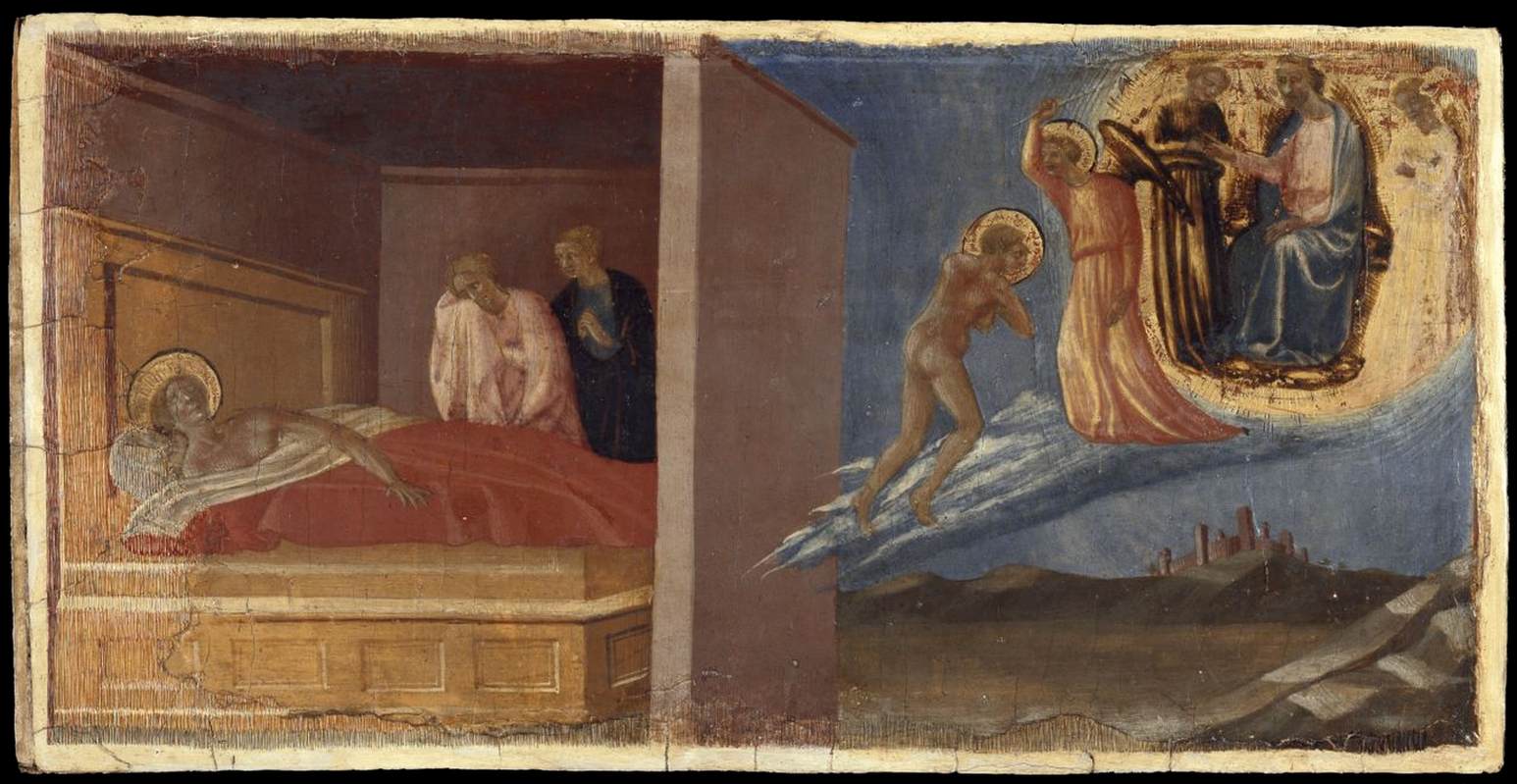Description
The painting "The Dream of St Jerome" by Francesco D'Antonio Di Bartolommeo is an Italian Renaissance masterpiece that has captivated art lovers for centuries. This work of art measures 19 x 37 cm and is in the collection of the National Gallery of Art in Washington DC.
The artistic style of the painting is typical of the Italian Renaissance, with meticulous attention to detail and great skill in painting technique. The composition is symmetrical, with Saint Jerome in the center of the image, flanked by an angel on each side. The figure of Saint Jerome is represented in a serene posture, with his head resting on his right hand as he sleeps. The angels, for their part, are represented with a beauty and grace that evoke the sensation of being in the presence of divine beings.
Color is another prominent aspect of the painting. The warm, earthy tones in the color palette create a sense of calm and serenity. The use of gold in the details of the angels and in the halo of Saint Jerome adds a touch of luminosity and divinity to the scene.
The history of painting is fascinating. It was commissioned by Cardinal Francesco Gonzaga for his private chapel in Mantua, Italy, in the early 16th century. The work remained in the Gonzaga family until it was sold to a private collector in the 18th century. Finally, it was acquired by the National Gallery of Art in Washington DC in 1959.
One of the little known aspects of the painting is that Saint Jerome is a very important saint for the Catholic Church. He was a renowned scholar and theologian in his time and is considered the patron saint of translators. The image of Saint Jerome in the painting represents his dream, in which Christ appeared to him and commanded him to translate the Bible into Latin.
In conclusion, "The Dream of St Jerome" by Francesco D'Antonio Di Bartolommeo is an exceptional work of art that combines technique, beauty and spirituality in a unique way. Its artistic style, composition, color and the story behind the painting are interesting aspects that make this artwork a jewel of the Italian Renaissance.

